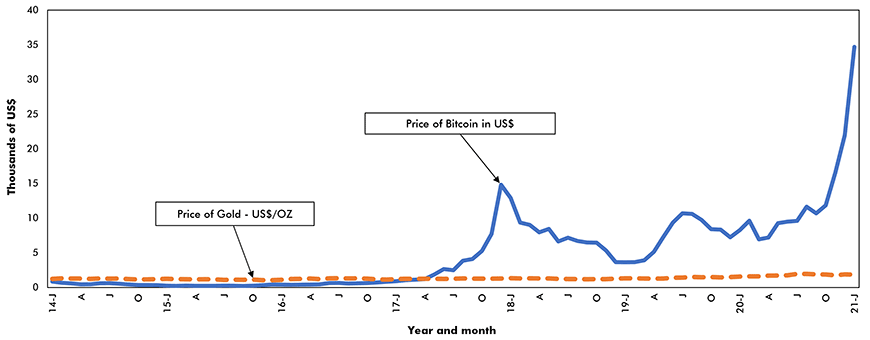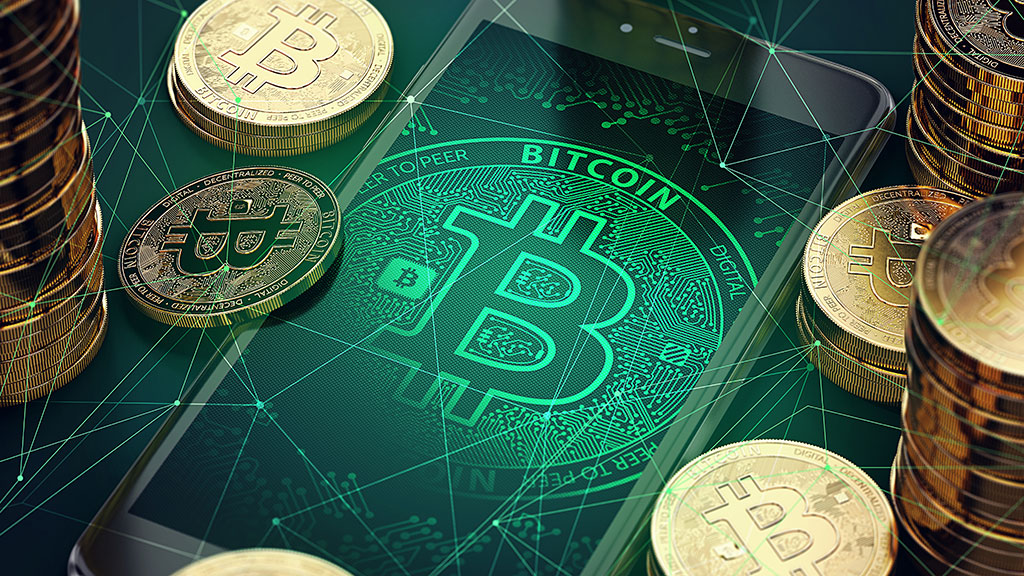A short history of currency
Before money, individuals used a system of barter to trade goods and services. Because barter was inconvenient and restricted the exchange of goods between parties separated by distance, people started using various commodities such as seashells, salt and precious stones as mediums of exchange.
Around 600 BC, the first coins, made of gold or silver, were used to buy and sell goods and services. Paper money was initially used by the Chinese around the 11th century. By linking the value of paper currency to a fixed amount of gold or silver, it could serve: 1) as a store of wealth; 2) a medium of exchange; and 3) a unit of measurement. Private banks were the first to issue paper currency, usually backed by gold. However, governments have been responsible for issuing currency in most countries since the 1700s. In October 1976, the convertibility of the U.S. dollar to gold was ended and then it became a fiat currency.
The advent of the Internet and the smartphone heralded the use of mobile payments, which enabled individuals to purchase goods and services remotely by transferring cash or credit from a bank savings or debit account to a creditor or vendor. These payments are denominated in the local currency of the country in which they occur.
A short history of Bitcoin
Bitcoin, the first cryptocurrency, was invented in early 2009 by Satoshi Nakamoto. It has no physical presence and is completely independent of central banks. All transactions are stored in a heavily encrypted decentralized computer system called a blockchain (also termed a distributed ledger) that preserves every transaction, controls the issuance of new coins, and records the transfer of coin ownership.
Each transaction is validated by a process called ‘mining’. Miners use their computers to validate and timestamp each transaction, which maintains the safety and integrity of the system. Bitcoin transactions are recorded on a publicly available website, Blockchain.com, while the ownership of the units is encrypted. Central banks around the world have adopted monetary policies which have, from time to time, depreciated the value of their currencies. In contrast, the supply of bitcoins is limited, thereby ensuring that they, not unlike gold, maintain their value (A more in-depth explanation of cryptocurrency is available from Wikipedia).
It should be noted that Bitcoin is not the only cryptocurrency. A quick search of the Internet reveals that since Bitcoin was introduced, approximately 5,392 cryptocurrencies have been developed. However, with a market cap of $616 billion, Bitcoin is more than four times larger than Ethereum, the second-largest cryptocurrency.
The price of Bitcoin, which has risen from a recent low of $7,039 CAD in March of last year to a recent high of $51,124 CAD on January 9th of this year, is currently viewed by some market analysts surveyed by Deutsche Bank to be in bubble territory.
Short term risks to Bitcoin
In the short term, there are several factors that could have a negative impact on Bitcoin. First, according Bridgewater Associates, Bitcoin has recently seen a lot of speculative interest by retail buyers. Margin borrowing rates are up and there has been an acceleration in leveraged buying across the Bitcoin trading platform. The same report notes that “Bitcoin’s price volatility has been significantly higher than other risky financial assets”. Second, a slowing in COVID-19 infection rates could reduce uncertainty and increase returns from more traditional financial assets. Third, stronger economic growth raises the risk of higher interest rates which will encourage investors to move away from non-interest-bearing assets.
Longer-term view of Bitcoin
The unprecedented rise of fiscal deficits around the world increases the risk that governments will, as they have frequently done in the past, inflate their way out of debt by printing more money. As a result, some financial establishments are considering using bitcoins as a hedge against inflation. Recently, Blackrock (the world’s largest asset manager) authorized two of its funds to invest in Bitcoin futures. Given the above-noted large number of recently created cryptocurrencies, it is now possible to purchase exchanged traded funds (ETFs) that hold only virtual currencies.
Also, Elon’s Musk’s Tesla purchased $1.5 billion USD in Bitcoin on February 8th and the company plans to start accepting ‘bitcoin’ as a payment method soon. As the chart illustrates, the rise in the price of Bitcoin relative to gold since early 2017 suggests more investors are adding the cryptocurrency to their portfolios.
Finally, on the downside, it should be noted that computer programs used to create Bitcoin are extremely energy intensive. According to a Cambridge University study, Bitcoin mining is drawing about the same amount of power annually as is consumed by Switzerland. In our view, this high cost may pose a risk for the long-term viability of Bitcoin mining. It should be noted, however, that not all cryptocurrencies are as energy intensive as Bitcoin.
Bottom line
While Bitcoin is the first and currently most popular cryptocurrency, it accounts for less than 1.5% of all outstanding financial assets, plus gold and silver. Despite structural and operational challenges, larger financial institutions are adding Bitcoin and other cryptocurrencies to their portfolios. This suggests that cryptocurrencies are here to stay.
The novelty of cryptocurrencies, however, combined with their above average price volatility (note chart) and the potential regulatory challenges they could face in the short term suggest they will appeal more to younger investors with a larger appetite for risk than to those who are older and prefer less volatile financial instruments.
John Clinkard has over 35 years’ experience as an economist in international, national and regional research and analysis with leading financial institutions and media outlets in Canada.
Price of Bitcoin vs Gold 2014 to 2021












Recent Comments
comments for this post are closed